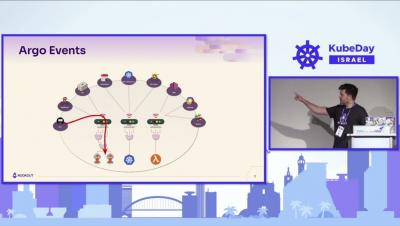Systems | Development | Analytics | API | Testing
Rookout
Episode 4: Troubleshooting & debugging across the SDLC (SD Times Microwebinars)
Shifting Right in Software Development: Adapting Observability for a Seamless Development Experience
You’ve probably heard of the “shift-left” mantra as it echoes throughout the tech industry. And if you haven’t, let me be the first to update you that you’ve been living under a rock. Like a real rock, not even a figurative one. In all seriousness, ‘shift-left’ has shaken things up quite a bit in the tech industry, bringing with it a paradigm shift in how we approach software development.
Observability Tools: Cutting Costs Without Compromising on Quality
In software development, striking a balance between cost and quality can sometimes feel as tricky as finding a bug in a spaghetti code. Observability tools face a similar dilemma, often consuming a significant portion of the budget and growing significantly year over year. The irony? The vast majority of the data gathered is never used. As is often the case, the driving force behind this trend is not an emotional response.
The Collaboration of Code: JavaScript, TypeScript, and CoffeeScript
In the vast universe of coding, JavaScript has earned itself a reputation of being a dynamic, high-level, interpreted language, often employed for enhancing user experiences on the web. However, as the complexity of web applications increased, developers craved more structure, static typing, and syntax variations. Enter the JavaScript dialects. They can be seen as extensions of the original JavaScript, with each one providing alternatives suited to diverse needs and preferences.
Episode 3: Cut Observability Costs (SD Times Microwebinars)
Top 5 Python Web Frameworks: Unlocking the Power of Python for Web Development
Welcome to the exciting world of Python web frameworks. Python, which is known for its simplicity and readability, has gained immense popularity in web development. But what exactly are Python web frameworks, and why do you need them? If you’re a developer – or an aspiring one – settle in and read on.
Episode 2: Live Observability (SD Times Microwebinars)
Multi-branch Pipeline with Argo Workflows and CI/CD Debugging - Gosha Dozoretz (CNCF Israel)
A New Dawn of Proactive Problem Solving: Dynamic Software Observability and Dynamic Logging
Let’s talk about the world’s currently trending topic for a second: AI. Now, before you click out of this blog, sighing to yourself that this is yet another blog that wants to tell you how to write code with ChatGPT; bear with us. As almost everyone has used some form of AI – especially ChatGpt – to help them with some form of a task, we can all agree that it’s quite an interactive experience.











